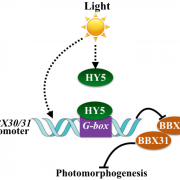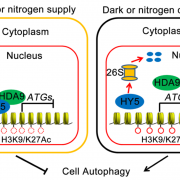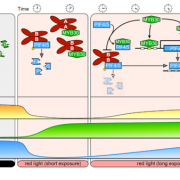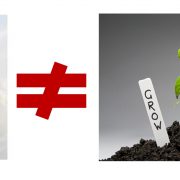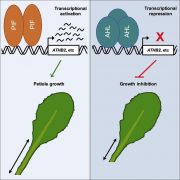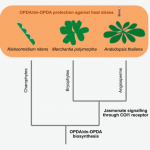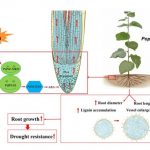In Arabidopsis, low blue light enhances phototropism by releasing cryptochrome 1-mediated inhibition of PIF4 expression (bioRxiv)
 A plant’s light environment is complex and variable, but through different photoreceptors the plant can perceive its environment and grow appropriately. For example, plants respond differently in the presence of dense vegetation (leading to a low red to far-red light ratio due to far-red light being reflected off nearby leaves) versus canopy shade (low levels of red and blue light as well as low red to far-red ratio). But in canopy shade, unfiltered light can pass through the gaps, and in this case, plants tend to reorient their stem towards the available light in what is known as phototropism. In this paper, Boccaccini et al. determined how canopy shade promotes phototropism. Experimental setups mimicking natural sunlight, canopy shade, low blue light, or low red to far-red ratio showed increased hypocotyl reorientation towards low blue light and canopy shade. Further tests with loss of function mutant lines, cry1 (Cryptochrome 1), phot1 (Phototropin 1), nph3 (NPH1-Photoreceptor interacting protein), pif4pif5pif6 (Phytochrome interacting factors) for their hypocotyl reorientation under low blue light was performed. Overall the authors have shown that phototropic enhancement during low-blue light canopy shade requires PHOT1 to perceive the blue light gradient which causes a reduction in CRY1 activity. This enhances PIF4 abundance leading to the modification of auxin related genes which promotes hypocotyl reorientation towards the unfiltered light during canopy shade. (Summary by Sunita Pathak) bioRxiv 10.1101/2020.02.28.969725
A plant’s light environment is complex and variable, but through different photoreceptors the plant can perceive its environment and grow appropriately. For example, plants respond differently in the presence of dense vegetation (leading to a low red to far-red light ratio due to far-red light being reflected off nearby leaves) versus canopy shade (low levels of red and blue light as well as low red to far-red ratio). But in canopy shade, unfiltered light can pass through the gaps, and in this case, plants tend to reorient their stem towards the available light in what is known as phototropism. In this paper, Boccaccini et al. determined how canopy shade promotes phototropism. Experimental setups mimicking natural sunlight, canopy shade, low blue light, or low red to far-red ratio showed increased hypocotyl reorientation towards low blue light and canopy shade. Further tests with loss of function mutant lines, cry1 (Cryptochrome 1), phot1 (Phototropin 1), nph3 (NPH1-Photoreceptor interacting protein), pif4pif5pif6 (Phytochrome interacting factors) for their hypocotyl reorientation under low blue light was performed. Overall the authors have shown that phototropic enhancement during low-blue light canopy shade requires PHOT1 to perceive the blue light gradient which causes a reduction in CRY1 activity. This enhances PIF4 abundance leading to the modification of auxin related genes which promotes hypocotyl reorientation towards the unfiltered light during canopy shade. (Summary by Sunita Pathak) bioRxiv 10.1101/2020.02.28.969725
[altmetric doi=”10.1101/2020.02.28.969725″ details=”right” float=”right”]


